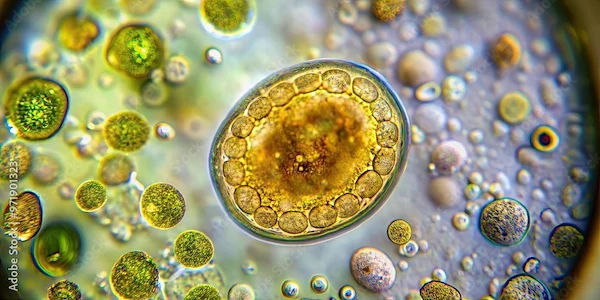How to Reduce Uric Acid From Body: A Comprehensive Guide
Discover effective ways to lower uric acid levels through diet, lifestyle changes, and natural remedies. Learn about foods to avoid, beneficial dietary choices, and essential lifestyle modifications.

Written by
Last updated on 3rd Jul, 2025
Uric acid is formed naturally when the body breaks down purines, substances found in certain foods. Now, the kidneys typically filter uric acid from the blood. However, high levels can lead to various health issues, including the formation of sharp crystals in joints and tissues. These crystals can trigger inflammation and long-term pain.
Thus, learning about this condition and taking steps in the early stage may help individuals recognise symptoms, manage the disease, and maintain a healthy life. Keep reading to learn the dietary tips for reducing high uric acid, lifestyle modifications, home remedies and more.
Health Consequences of Elevated Uric Acid
High uric acid levels in the blood lead to many health complications. If the body is unable to properly eliminate uric acid, then it affects multiple organs:
Uric acid particularly affects the joints and kidneys.
Long-term elevation of uric acid levels can damage joint tissues permanently.
It may also lead to chronic kidney disease.
Gout is the most common disease caused by high uric acid levels. It occurs when uric acid crystals accumulate in joints. This causes intense pain and inflammation. Here are some signs of gout:
Sudden, severe joint pain, especially in the big toe
Swelling and redness around affected joints
Warmth and tenderness in the area
Limited range of motion
Attacks often start at night
Episodes can last 3-10 days
Lingering joint discomfort after acute attacks
Apart from gout, elevated uric acid levels can affect multiple body systems and lead to various health complications:
Kidney stones from crystallised uric acid
Chronic kidney disease
Hypertension
Cardiovascular disease
Type 2 diabetes
Tophi (crystal deposits under the skin)
Joint deformity
Bone erosion
Dietary Adjustments to Lower Uric Acid
Proper diet plays a crucial role in managing uric acid levels. In this regard:
Food choices directly impact the amount of purines entering the body.
A balanced diet helps maintain healthy uric acid levels.
The focus should be on reducing purine-rich foods while increasing items that help eliminate uric acid.
Regular meal timing prevents sudden spikes in uric acid production.
Portion control is equally important as food selection.
High-purine foods significantly increase uric acid production and should be limited or avoided. They include:
Organ meats (liver, kidney)
Red meat and game meat
Seafood (sardines, anchovies, mussels)
Alcohol, especially beer
Sugary beverages
High-fructose corn syrup products
Yeast and yeast extracts
Certain foods help reduce uric acid levels and should be incorporated into daily meals:
Fresh vegetables (except mushrooms and asparagus)
Low-fat dairy products
Whole grains
Lean proteins (chicken, turkey)
Fruits (especially cherries)
Legumes
Nuts and seeds
Proper portion control helps manage uric acid levels. Small, frequent meals are better than large ones. This approach prevents sudden spikes in uric acid production.
Lifestyle Modifications to Lower Uric Acid Levels
Proper hydration helps the kidneys flush out excess uric acid from the body. Water acts as a natural cleanser and supports optimal kidney function.
Key hydration tips:
Drink 8-10 glasses of water daily
Avoid sugary beverages and alcohol
Monitor urine colour (pale yellow indicates good hydration)
Increase water intake during exercise or hot weather
Consider adding lemon to water for added benefits
Exercise helps maintain healthy uric acid levels and supports weight management. Also, regular movement improves circulation and joint flexibility.
Recommended activities:
Low-impact aerobic exercises (30 minutes daily)
Swimming or water aerobics
Walking at a moderate pace
Gentle cycling
Yoga or stretching exercises
Tai chi for balance and flexibility
Maintaining a healthy weight reduces stress on joints and helps control uric acid production. In this regard, gradual weight loss is safer than crash dieting.
Weight management strategies:
Set realistic weight loss goals (1-2 pounds per week)
Follow a balanced, portion-controlled diet
Track daily food intake
Combine diet with regular exercise
Consult healthcare providers for personalised plans
Medical Interventions to Lower Uric Acid
When lifestyle changes don't provide sufficient control, medical treatment becomes necessary. Doctors prescribe medications based on individual needs.
Common medications:
Allopurinol for reduction of uric acid production
Febuxostat as an alternative to allopurinol
Probenecid for improving kidney excretion
Colchicine for treating acute gout attacks
Nonsteroidal Anti-inflammatory Drugs (NSAIDs) for pain and inflammation
Individuals should consider seeking medical attention when specific symptoms appear like:
Severe joint pain lasting more than 48 hours
Multiple affected joints
Fever with joint symptoms
Development of tophi
Decreased urine output
Persistent kidney pain
Home Remedies and Natural Treatments to Lower Uric Acid
Along with medical treatments, natural remedies can also provide relief to the symptoms. These options may help reduce inflammation and support healthy uric acid levels. Some beneficial herbs and natural treatments include:
Tart cherry juice or extract
Turmeric with black pepper
Ginger tea or supplements
Apple cider vinegar
Devil's claw
Celery seed extract
Furthermore, certain supplements may help manage uric acid levels when used properly. The recommended supplements are:
Vitamin C (500-1500 mg daily)
Folate
Fish oil (omega-3 fatty acids)
Quercetin
Bromelain
Milk thistle for liver support
Note: Professional guidance is recommended before starting any supplement regimen.
Monitoring Uric Acid Levels
Blood tests measure uric acid levels in the body, which require fasting for 8-12 hours beforehand. Testing frequency depends on:
Initial Diagnosis: Monthly tests until levels stabilise
Stable Patients: Every 6 months
During Gout Attacks: As recommended by a doctor
When Starting New Medications: More frequent monitoring
With Kidney Problems: Regular testing every 3-4 months
Normal uric acid levels vary by gender and age. The test results help determine treatment effectiveness and disease management. Check out the key measurements below:
Normal Male Range: 3.4-7.0 mg/dL
Normal Female Range: 2.4-6.0 mg/dL
High-risk Level: Above 6.8 mg/dL
Critical Level: Above 8.0 mg/dL
Target Level for Gout Patients: Below 6.0 mg/dL
Prevention Strategies
A consistent diet helps maintain healthy uric acid levels. The focus should be on long-term eating patterns rather than temporary changes. Essential dietary habits include:
Regular meal timing
Portion control at every meal
Limited purine-rich foods
Increased water intake
Balanced nutrient intake
Moderate protein consumption
Regular fruit and vegetable intake
Daily lifestyle choices significantly impact uric acid management. Following are a few habits that can help maintain optimum uric acid levels:
Regular exercise schedule
Consistent sleep patterns
Stress management techniques
Weight monitoring
Medication compliance
Regular health check-ups
Alcohol moderation
Hydration tracking
Conclusion
Managing uric acid requires a comprehensive approach. Diet, exercise, and lifestyle changes work together. Regular monitoring and professional guidance ensure success. One can also try home remedies, but they should be used in conjunction with the recommended medication.
With proper management, people can maintain healthy uric acid levels and prevent complications.
Consult Top General Physician
Consult Top General Physician

Dr. Mohamed Azeem
General Physician/ Internal Medicine Specialist
2 Years • MBBS,MD(Internal Medicine) CCEBDM
Karaikudi
Apollo Hospitals Karaikudi, Karaikudi

Dr Bhumika Lalwani
General Surgeon
4 Years • MBBS MS
Bengaluru
PRESTIGE SHANTHINIKETAN - SOCIETY CLINIC, Bengaluru
Dr. Sujay P R
General Physician/ Internal Medicine Specialist
3 Years • MBBS
Bengaluru
PRESTIGE SHANTHINIKETAN - SOCIETY CLINIC, Bengaluru

Dr. B Shilpa Naidu
General Physician/ Internal Medicine Specialist
9 Years • MBBS, MD GENERAL MEDICINE
Bengaluru
Apollo Medical Center, Marathahalli, Bengaluru
(50+ Patients)
Dr. Paras Gangwal
General Physician/ Internal Medicine Specialist
28 Years • MBBS,MD General Medicine
Delhi
Dr Paras Gangwal Clinic, Delhi




